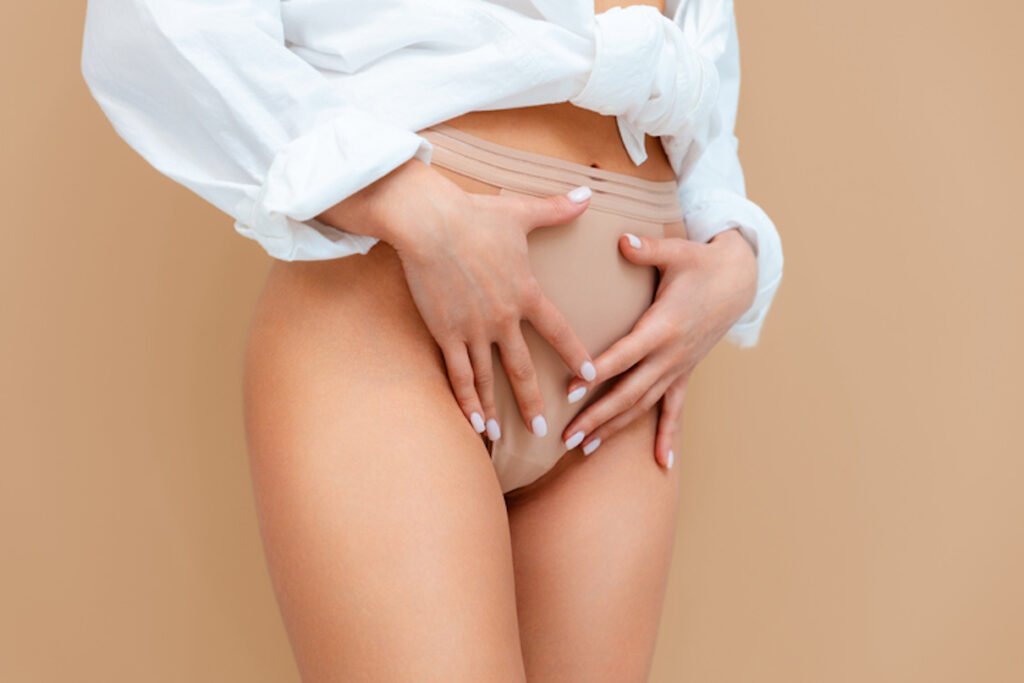Overlook a brand new yr, new you; let’s goal for a wiser, not tougher, strategy to wellness. Forward, you’ll discover the foundations for a vaginal health-check—together with indicators that issues are operating easily… and indicators that your vaginal surroundings has been thrown off. Plus: an OB-GYN’s tricks to promote vaginal well being and sexual wellness and the way usually you actually ought to go to your MD.
As we ease into the swing of 2024, you’re in all probability pondering of the way to enhance your well being, happiness, and well-being. With that in thoughts, may we recommend leaning into some routine housekeeping so you will have your bases lined earlier than advancing to loftier targets and resolutions? For example, for those who’ve been nervous to handle some indicators of vaginal imbalance or have in any other case missed some routine gyno appointments, think about this your cue to get up to the mark, stat.
Maintain studying to find the ins and outs of vaginal well being—that means what’s regular and what could possibly be trigger for concern—as guided by Cynthia Abraham, MD, FACOG, a board-certified OB-GYN with Mount Sinai Hospital in New York Metropolis.
What Does a Wholesome Vaginal Setting Look Like?
Earlier than we dive into the important thing indicators suggesting that your vaginal well being might use enchancment, let’s first cowl the right way to know in case your vagina is wholesome and balanced. “Pink, lubricated vaginal tissue and no irregular vaginal discharge are key indicators of a wholesome vaginal surroundings,” says Dr. Abraham.
As a reminder, vaginal discharge is completely regular and anticipated. Per the National Health Service (NHS) of the United Kingdom, vaginal fluid retains this sexual organ clear and moist whereas defending towards an infection. It additionally helps to steadiness the vaginal microbiome. That mentioned, the colour, consistency, and odor of vaginal discharge ought to fall inside sure requirements for it to be wholesome and A-okay:
- Colour: clear or milky white
- Consistency: skinny and slippery to thick
- Odor: faint (not foul or fishy)
The markers above will differ from one girl to the following—in addition to primarily based on private components like age, menstruation status and level in your cycle, and general hormonal well being.
Indicators Your Vaginal Well being Might Be Off
It’s fairly straightforward to identify indicators of a less-than-healthy vaginal surroundings. Dr. Abraham cites the next as the important thing signs of vaginal imbalances:
- Recurrent infections, together with yeast infections and bacterial vaginosis
- Irregular discharge (i.e., if it’s malodorous and/or not clear or white)
- Itching
“Situations by which signs don’t enhance after over-the-counter antifungals and steroids,” she continues, will warrant medical consideration. “It’s essential to see a gynecologist if there’s no decision in signs inside 72 hours of beginning over-the-counter therapy.” In some circumstances, continued signs could sign the presence of a sexually transmitted an infection (STI) or one other underlying well being situation.
An absence of vaginal moisture may additionally sign that your vaginal surroundings isn’t in peak form and/or that you simply’re coping with hormonal imbalances. Vaginal dryness could also be related to main life levels and occasions—with menopause maybe most well-known amongst them—on account of dips in estrogen. “Estrogen is a hormone launched by the ovaries that helps keep vaginal lubrication, elasticity, and thickness,” Dr. Abraham beforehand instructed HUM. “Low estrogen ranges also can happen after childbirth and with breastfeeding.”
As well as, vaginal dryness, thinning, and irritation may additionally mirror imbalances within the vaginal microbiome. For example, a 2014 study within the journal Menopause confirmed {that a} low abundance of sure Lactobacillus micro organism strains was related to vulvovaginal atrophy (a typical situation by which the vaginal lining dries and thins out, resulting in ache and discomfort).
A number of different indicators and occasions may additionally let you already know that it’s time to see your gynecologist, equivalent to:
- The presence of any bumps, sores, discoloration, and comparable abnormalities
- Main adjustments in your menstrual cycle and/or irregular bleeding
- Ache throughout sexual exercise

It’s all too frequent for girls to draw back from merely speaking about vaginal well being, in addition to investigating issues on their very own—particularly if a difficulty (and consequent embarrassment or worry) arises. Nevertheless, it’s essential to do not forget that you’re not alone and also you don’t want to interact in destructive self-talk or cave right into a disgrace spiral. In spite of everything, neither will aid you get your vaginal well being—to not point out psychological well being—again on monitor.
As is the case with any well being issues, it’s essential to be proactive and take needed precautions prior to later. Listed below are 8 of Dr. Abraham’s prime solutions to help vaginal and sexual well being on a routine foundation:
- Put on free cotton underwear for breathability and luxury
- Use cleaning soap and water when bathing and by no means apply cleaning soap inside your vagina
- Keep away from douching, which might wreak havoc in your vaginal microbiome and is even related to an increased risk of adverse gynecological health outcomes
- Take probiotics (equivalent to HUM’s Private Party) to help wholesome bacterial steadiness and improve immune defenses
- Follow protected intercourse, specifically through the use of condoms to forestall new organisms from coming into your vagina
- Urinate after sexual activity
- Clear intercourse toys completely after every use
- Consulting your gynecologist as wanted and on a routine foundation
On this final level, Dr. Abraham reminds us that you should transcend making a gynecological appointment solely when one thing appears off down there. “It is extremely essential that sufferers see the gynecologist yearly,” she shares. “Nevertheless, PAP smears don’t have to be carried out yearly. Within the absence of irregular cells and high-risk HPV, The interval might be expanded to each 3 to five years.” She provides that PAPs might be discontinued by the point you attain age 65, as long as you’ve had regular PAPs over the previous 10 years and don’t have any historical past of extreme cervical dysplasia prior to now 25 years.

